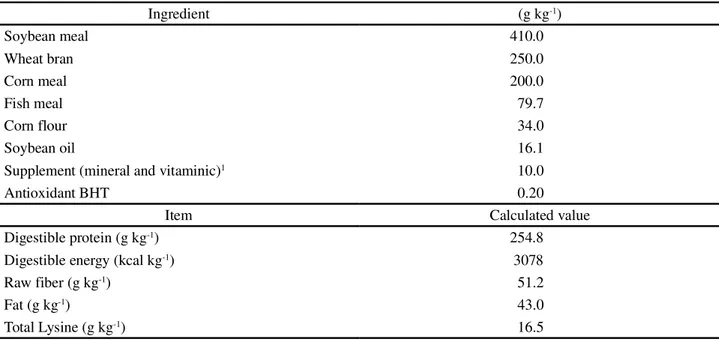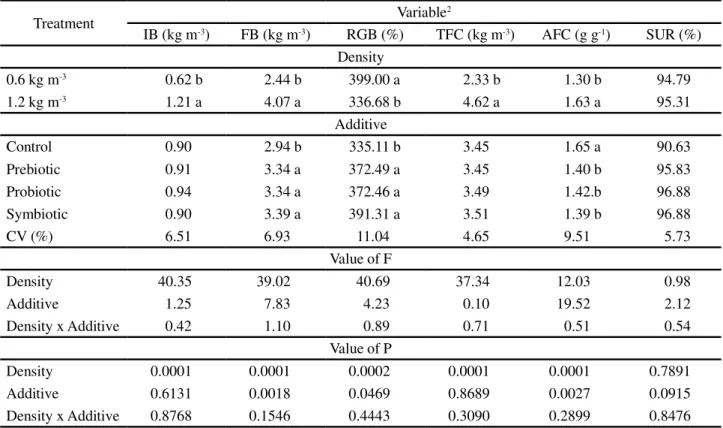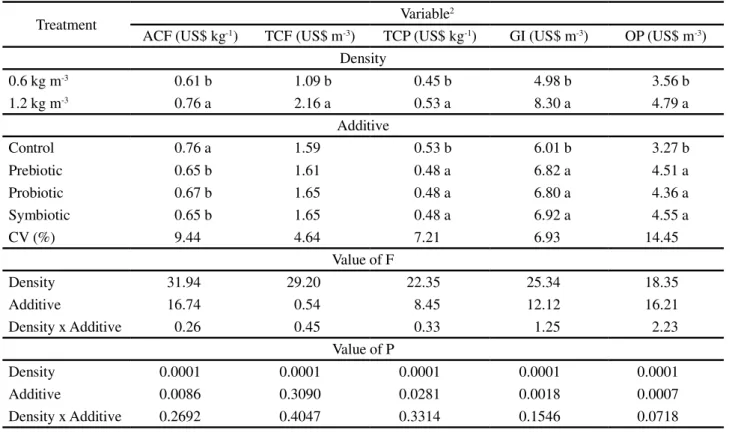Economic evaluation of prebiotics, probiotics and symbiotics in juvenile Nile tilapia
Texto
Imagem




Documentos relacionados
This study aimed to evaluate the effects of probiotics and prebiotics of bacterial and yeast origin on the performance, development of the digestive system, carcass yield and meat
(2002) no observed differences in CD of the jejunum between the control group and the birds receiving diets containing Bacillus subtilis, however, higher CD were seen when
The averages of growth and carcass characteristics after 30 experimental days, of the Nile tilapia ( Oreochromis niloticus ) fingerlings submitted to diets containing 20g kg -1
Molecular phylogeny of Thraupis Boie, 1826 Aves: Passeriformes and taxonomic review of the Thraupis episcopus Linnaeus, 1766 – Thraupis sayaca Linnaeus, 1766 species complex.. O
Hence, the usage of probiotics is recommended to counter the effect of viral and bacterial infections in commercial aquaculture.. The pond probiotics also have a
(2014) evaluated the effectiveness of using the Bacillus subitilis probiotic on the animal performance, carcass yield and parts of the carcass of broiler chickens at
This indicated that valine supplementation was not necessary in this study, since a valine concentration of 0.82% in the diet supplied the nutritional needs of the Nile
